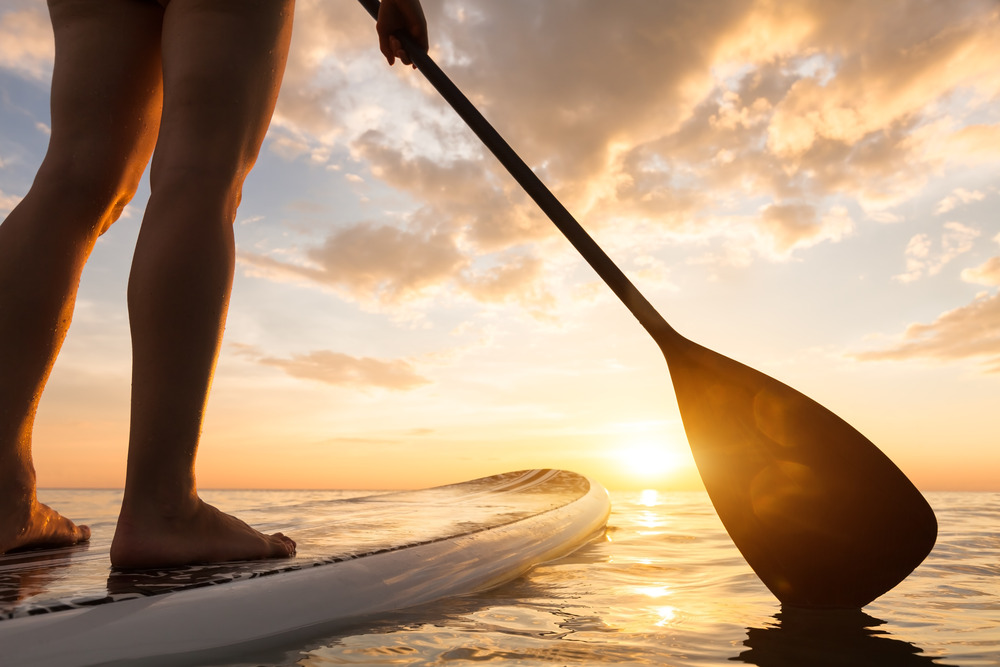
Stand-up paddle board (SUP) rental is a hot ticket item at Canyon Sports this time of year. Along with kayak rental, bike rental, and bike tunes, our customers are looking to enjoy fantastic new adventures on Utah’s waterways with SUPs. We would be happy to help you with paddle board rental as well.
If you are new to the whole paddle board thing, you’re in for a treat. Navigating local waterways on an SUP is unique in so many ways. Some even say that SUPs offer a more personal experience than boats, canoes, or kayaks. That’s for you to decide. One way or the other, we are here to help you get started.
With that said, here are the top five most helpful tips for new paddle boarders:
1. Start on Your Knees
If you’ve never used an SUP before, you may find staying upright a bit challenging. Balancing on a thin board isn’t always easy. It turns out that starting on your knees is not only okay, but it is also a good idea. Spending 15 to 20 minutes on your knees while getting used to how the board feels in the water can be a tremendous help when you are finally ready to stand.
Starting on your knees also helps you get used to paddling. It’s easier for you to feel how the paddle moves through the water and how the board responds to that movement. When you do stand, paddling should be easier.
2. Focus on the Horizon
The tendency of new paddle boarders is to either stare at their feet or the tip of the board as they paddle. Not a good idea. Why? Because your eyes, ears, and legs all work together to keep you balanced. For their part, your eyes need to see what’s out in front of you to do their job. Staring at your feet or the tip of the board could throw off your balance or even make you dizzy.
Your best bet is to look out at the horizon whenever you’re paddling. You can look elsewhere when you stop to take a break. Also try to avoid broad, sweeping movements with your head. Move your head slowly and change your gaze more with your eyes instead.
3. Don’t Rely Only on Your Arms
Another tendency among new paddle boarders is to rely solely on their arms to move them through the water. Your arms will do a great job, but they will do even better if you use your entire upper body to paddle. If you were in a canoe or kayak, you would put your back into it, so to speak. Do the same thing on an SUP.
4. Learn the Proper Way to Fall
One of the first things ski instructors teach new skiers is how to fall safely. The same thing applies to paddle boarding. You’re going to fall at some point. When it happens, try to fall away from your board rather than on it. It is strapped to your foot so there’s no risk of losing the board. By falling away from it, you reduce the risk of injury.
5. Try to Have Fun
It can take some time to get used to an SUP. While you’re learning, avoid the temptation of being too hard on yourself. Make it about having fun. Having fun will reduce the stress and anxiety that comes with learning. You’ll be more likely to enjoy yourself, which means being more likely to try it again. We think that’s the best way to make the most of your paddle board rental.
